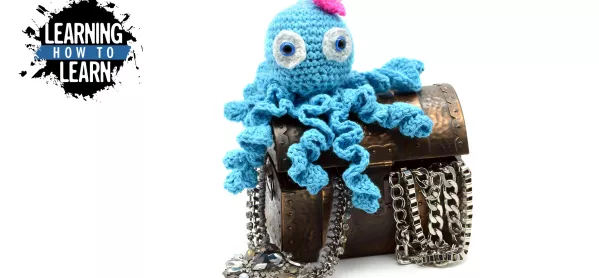Learn to learn: why you should know about the attentional octopus
Share
Learn to learn: why you should know about the attentional octopus
How would you rate your attentional octopus? What about your memory locker?
An attentional octopus and a memory locker are useful metaphors for working memory and long-term memory, as you can see in this video.
In the video, lockers and school bags are introduced as metaphors for the two main types of memory systems: long-term memory and working memory.
Long-term memory can hold a lot of information, but that information can take a little longer to get to, like a locker. Working memory can only hold a little bit of information, but it is handy and easy to get to, like a school bag.
This article is part of a series by Professor Barbara Oakley called Learning How To Learn (L2L). A list of all the chapters will be available at this link from 16 April.
But if we want to understand working memory even better, a good metaphor to use is the “attentional octopus”.
The attentional octopus
The attentional octopus “lives” in the prefrontal cortex and allows people to hold some information briefly in mind.
If students have built solid sets of links that they have previously stored in long-term memory, it is easy for their attentional octopus (their working memory) to reach into memory and grab those links.
This can allow students to hold very complex ideas in mind, even if their working memory isn’t that big.
Sticky and slippery arms
On average, students have four “arms” in their working memories. Some students have more, others have fewer.
Some students have incredibly sticky arms in their working memory, others have slippery arms.
When students are learning something new, their working memory is very busy. But once they have understood and practised with the information, they create sets of brain links that make it easier for working memory to pull the information to mind.
Why knowledge of working and long-term memory is important
Understanding the limitations of students’ working memory will help you be a better teacher. Our tendency is to want students to construct all their knowledge themselves. This is a laudable goal.
But the challenge is that if a student is presented with too much information to process in working memory at one time, their working memory can be overloaded. Students can become frustrated and give up.
This is why scaffolding your teaching - presenting information so there is not too much new material at once - is important. It is also why practice, which creates sets of links that the working memory can easily draw into mind, is important as well.
This article is part of a series by Professor Barbara Oakley called Learning How To Learn (L2L). A list of all the chapters will be available at this link from 16 April.
Notes by Professor Barbara Oakley and ESIC Business and Marketing School. Videos reproduced with kind permission of the Arizona State University and Professor Barbara Oakley.
For more information, see Learning How to Learn: How to Succeed in School Without Spending All Your Time Studying; A Guide for Kids and Teens.




